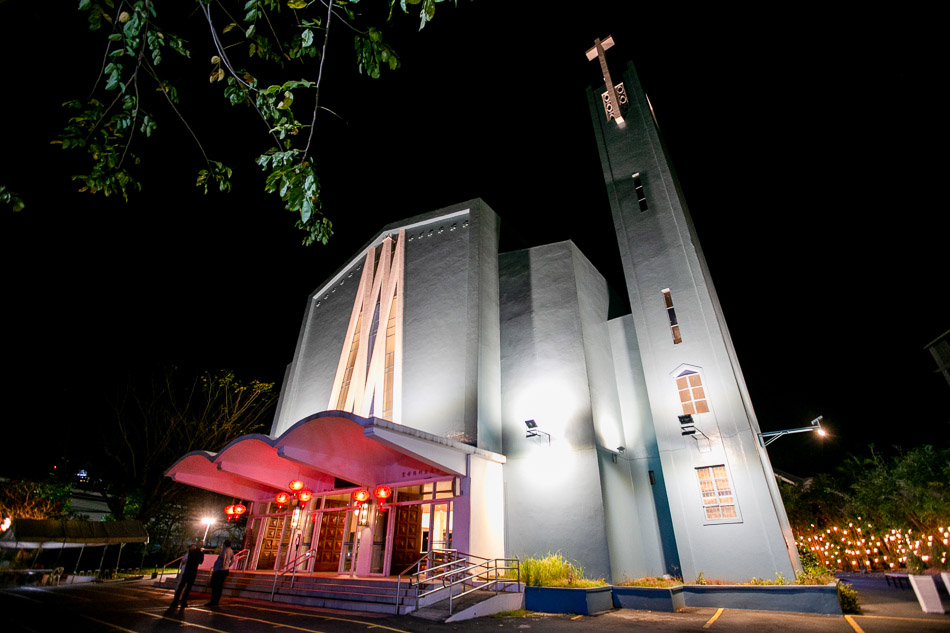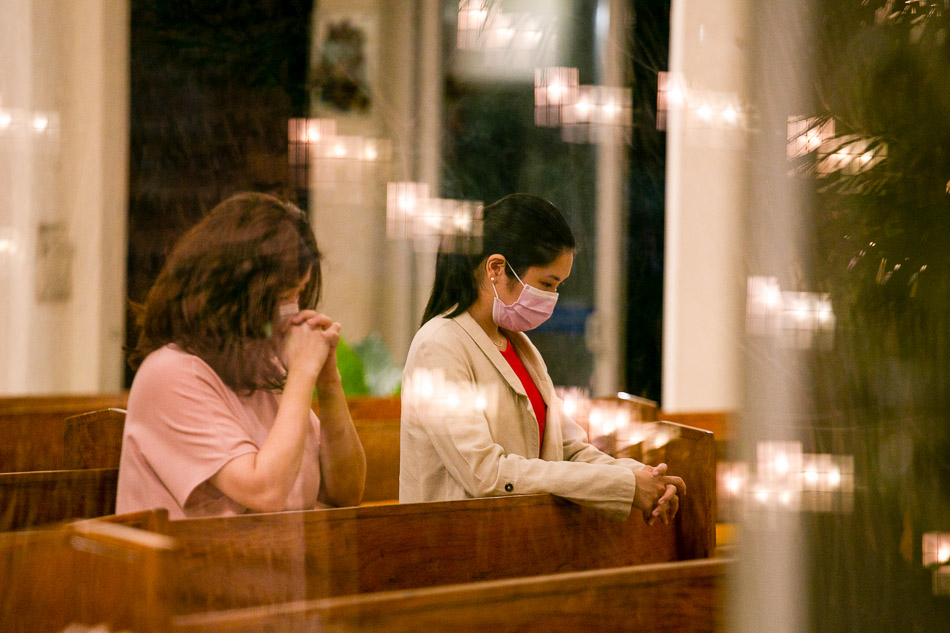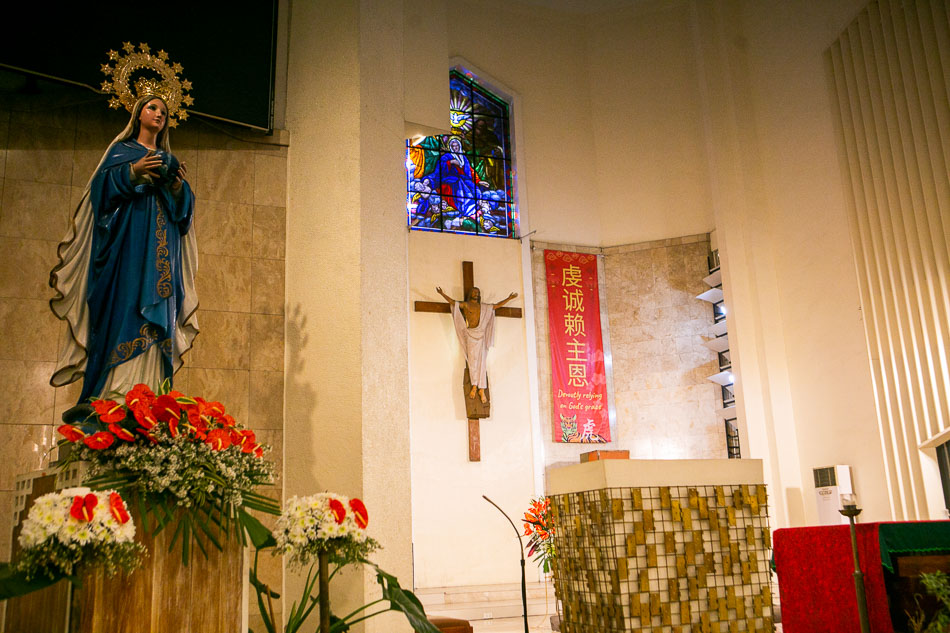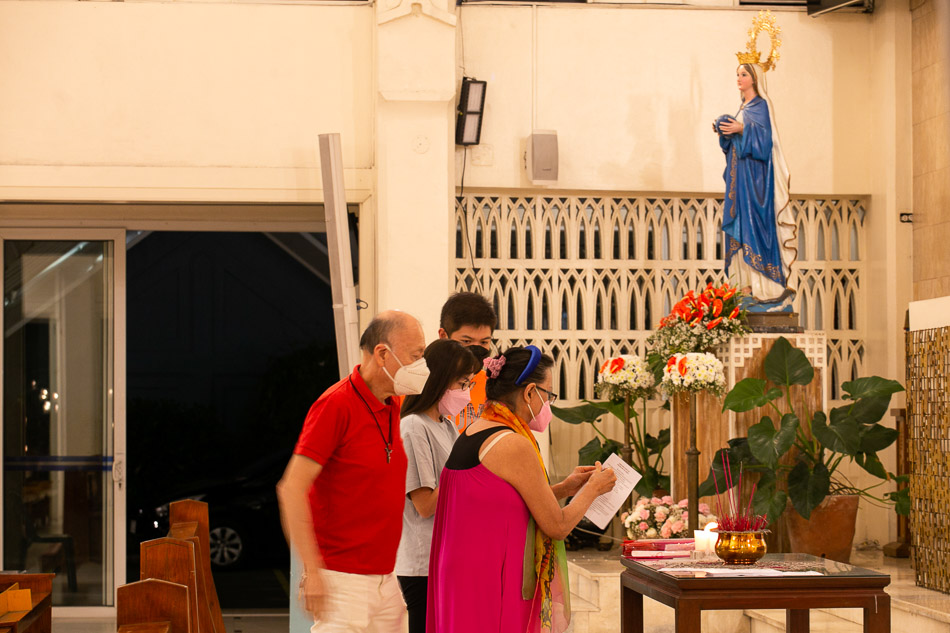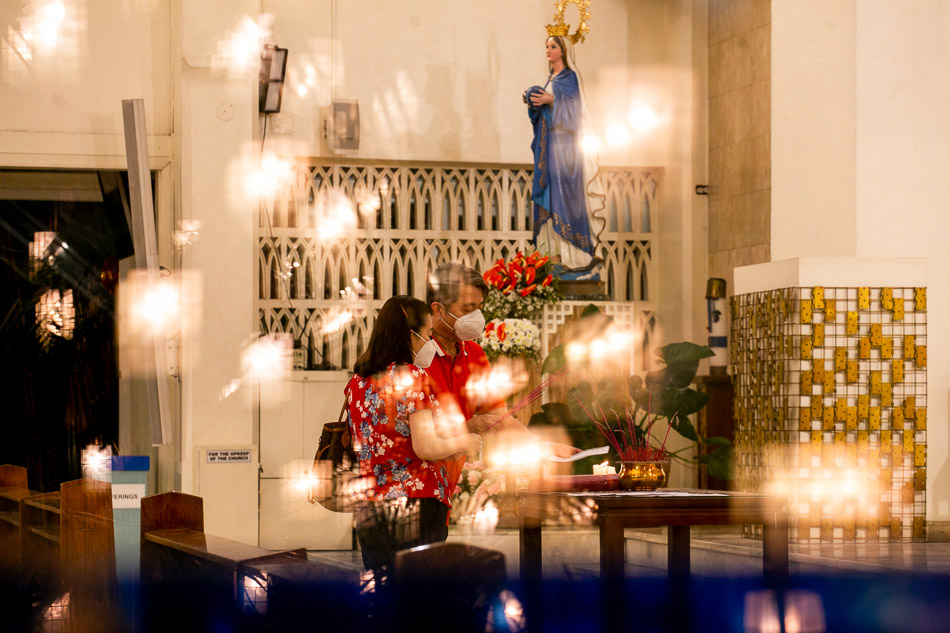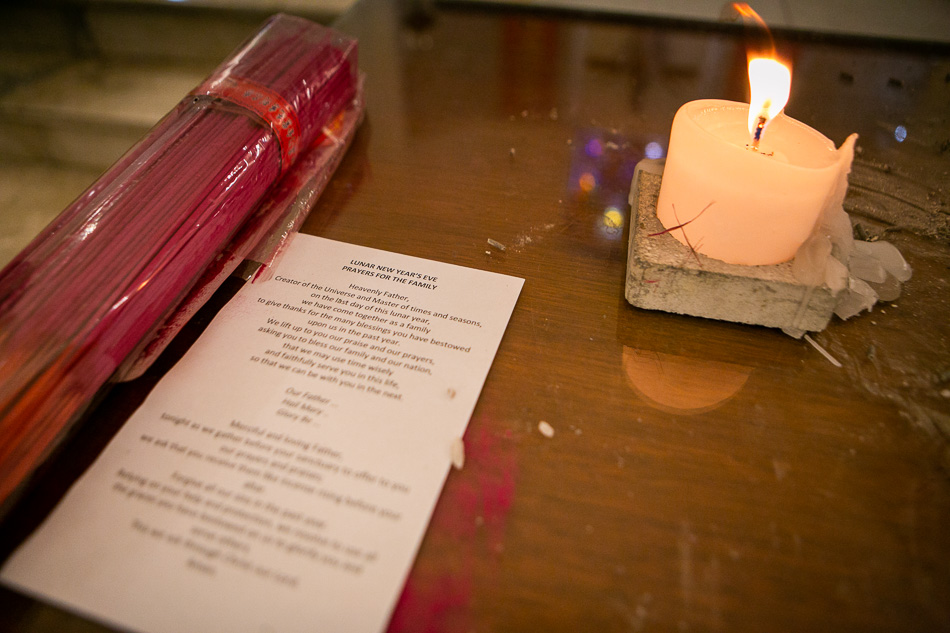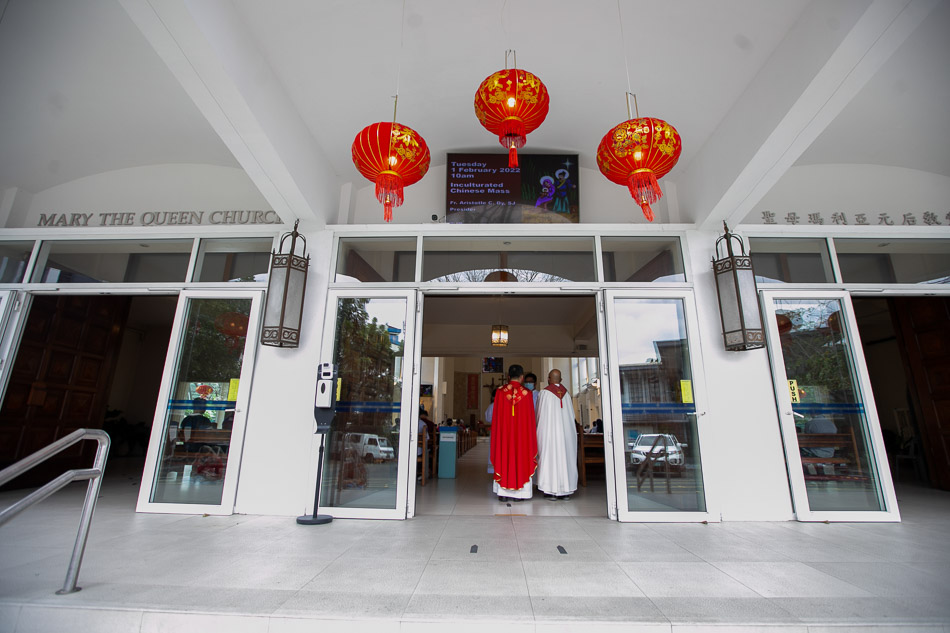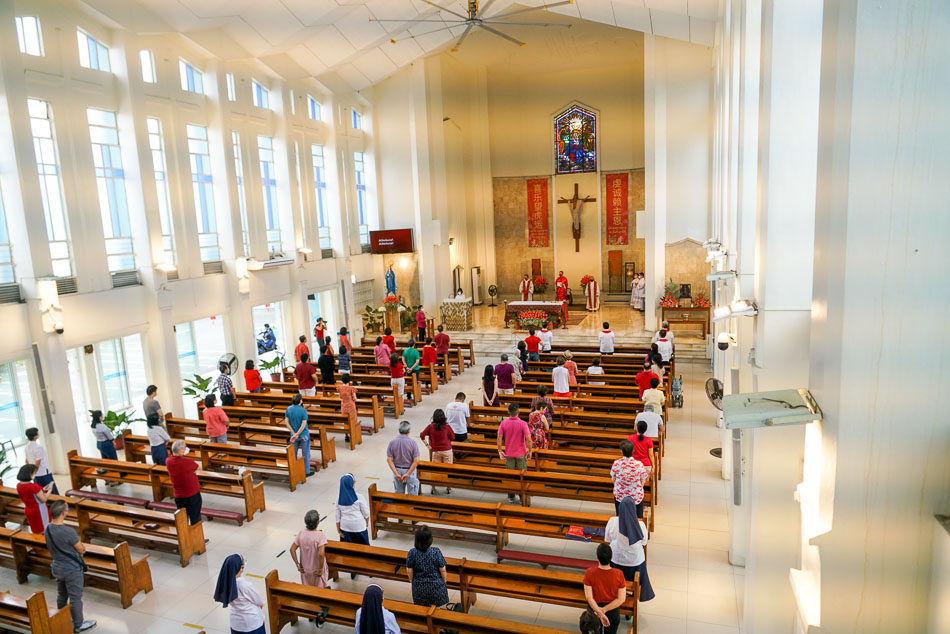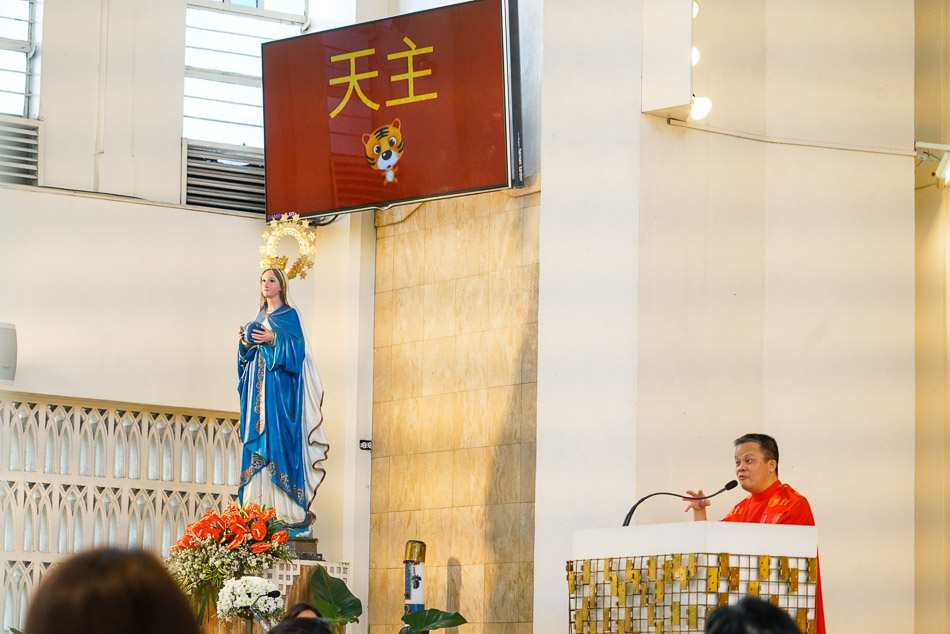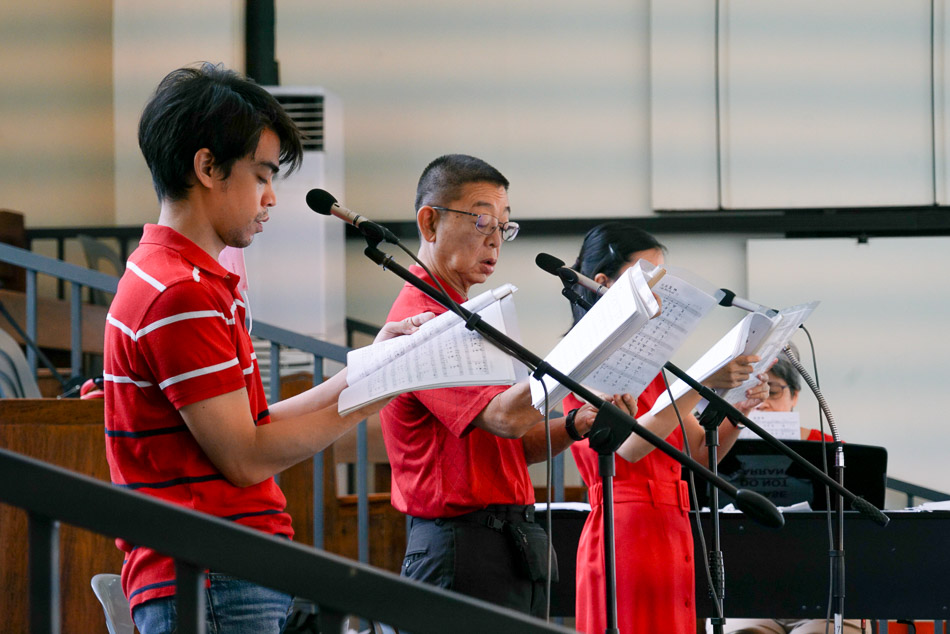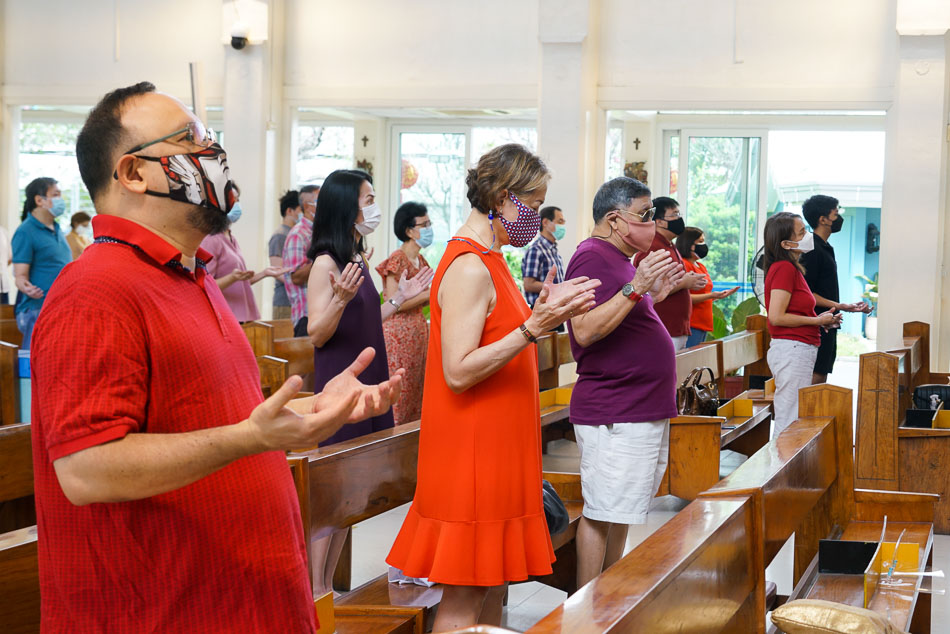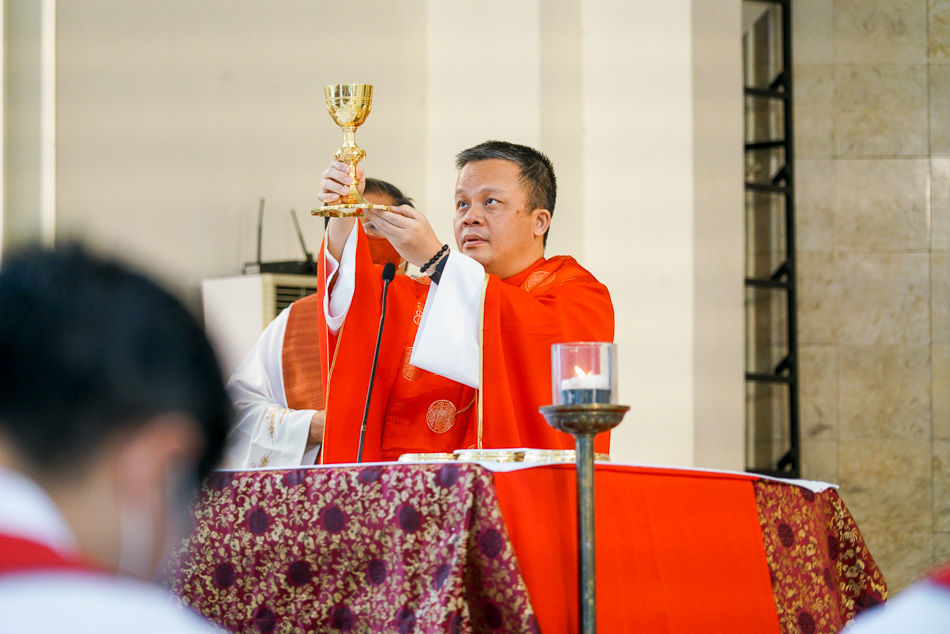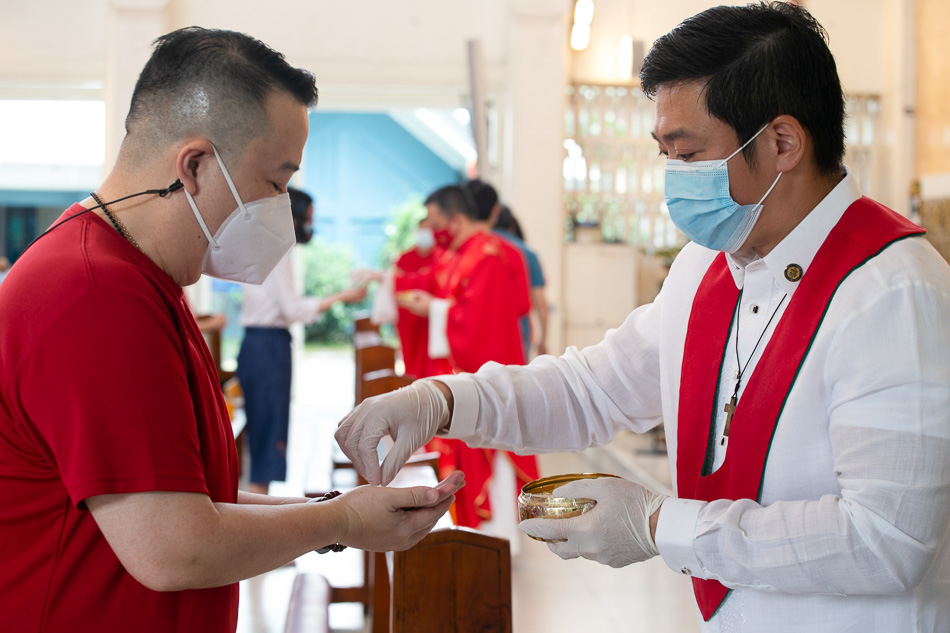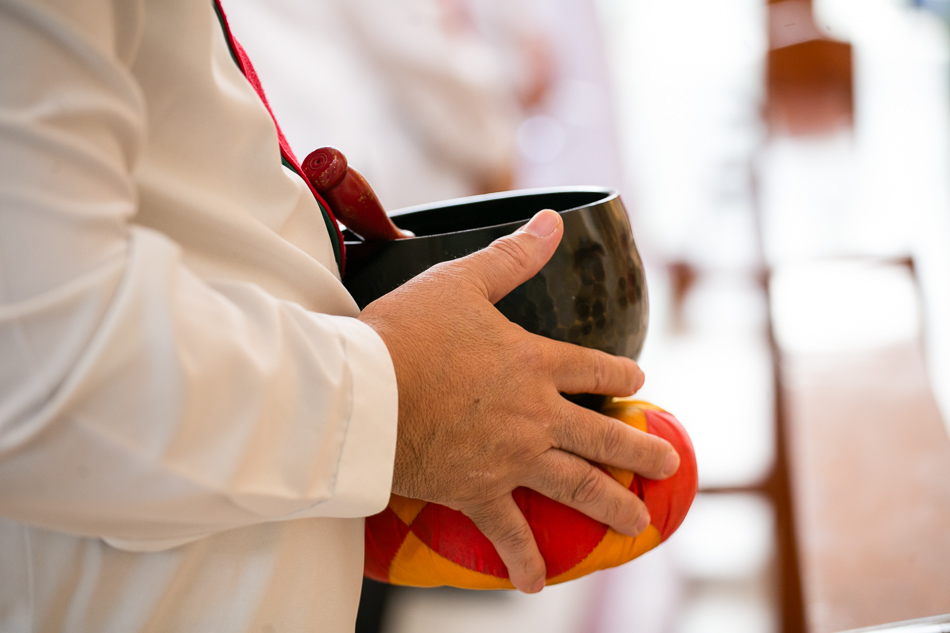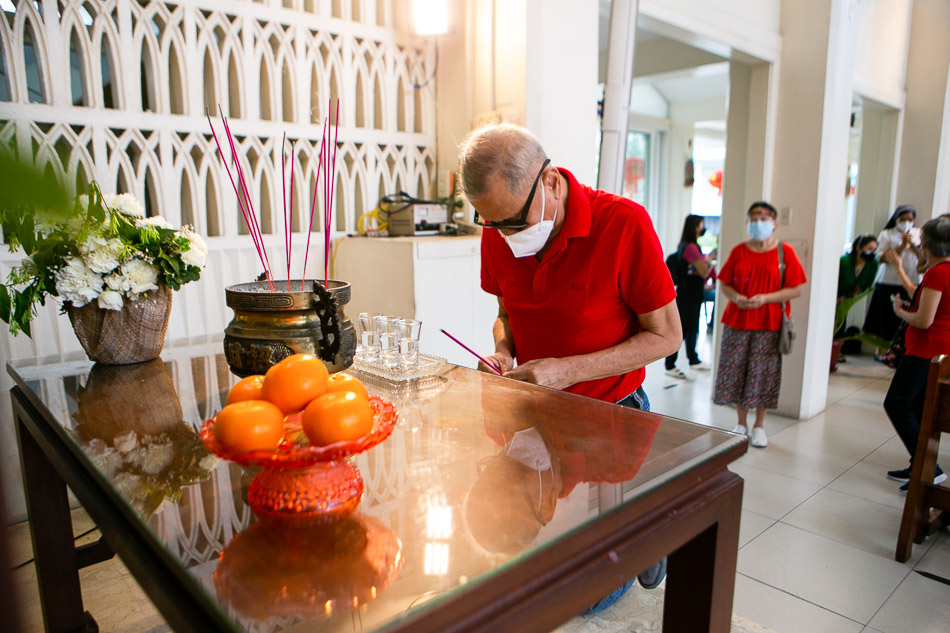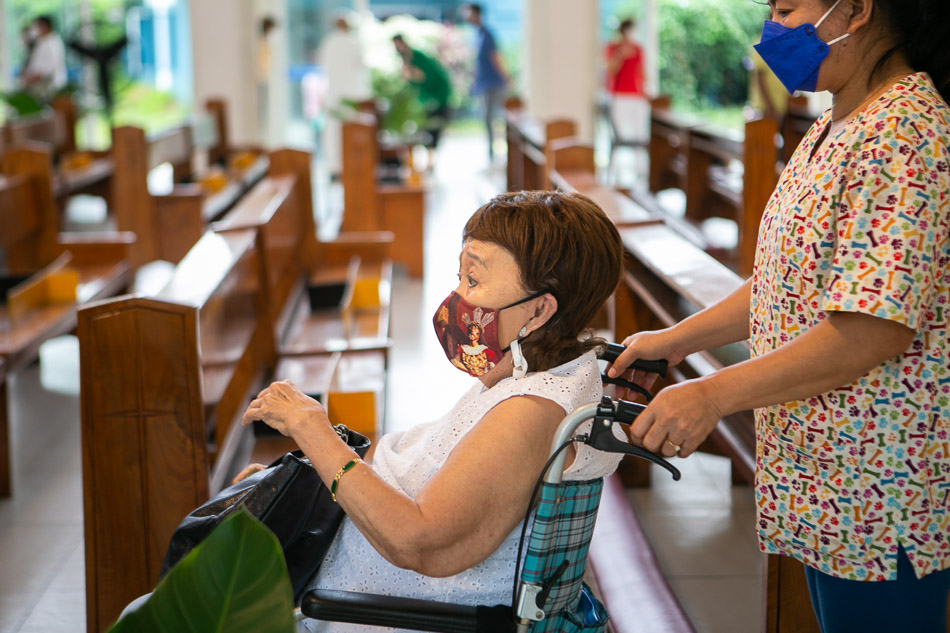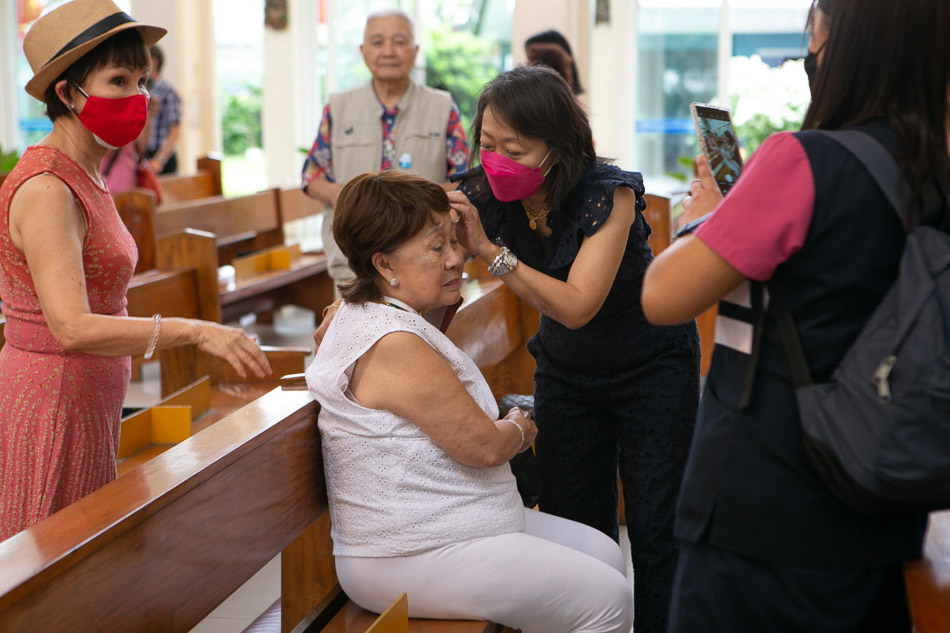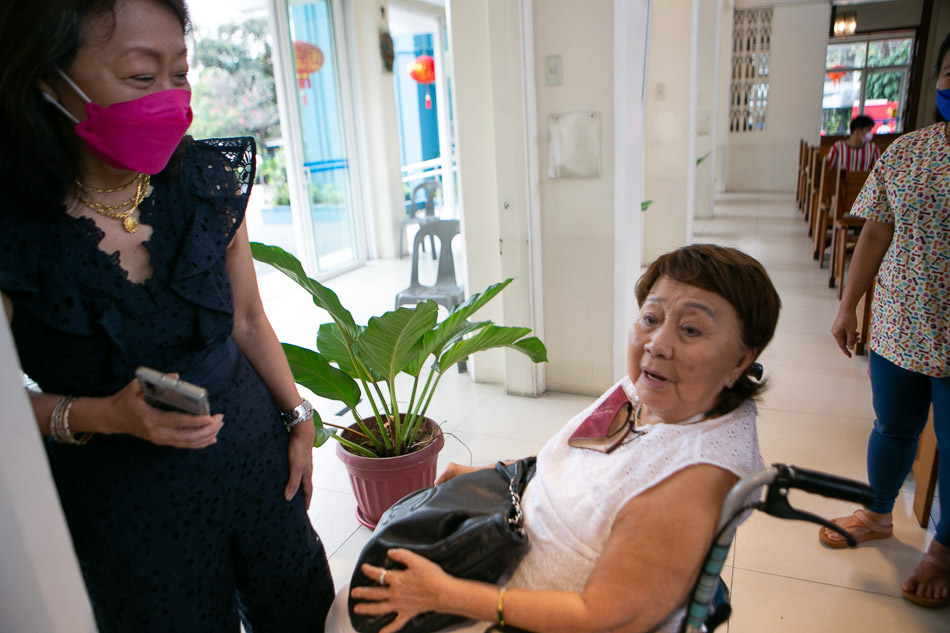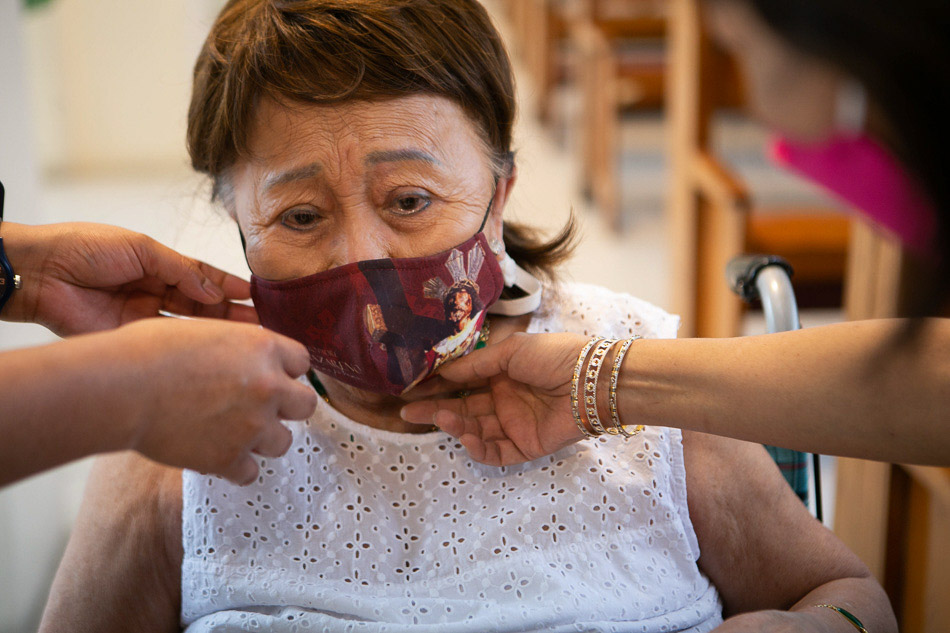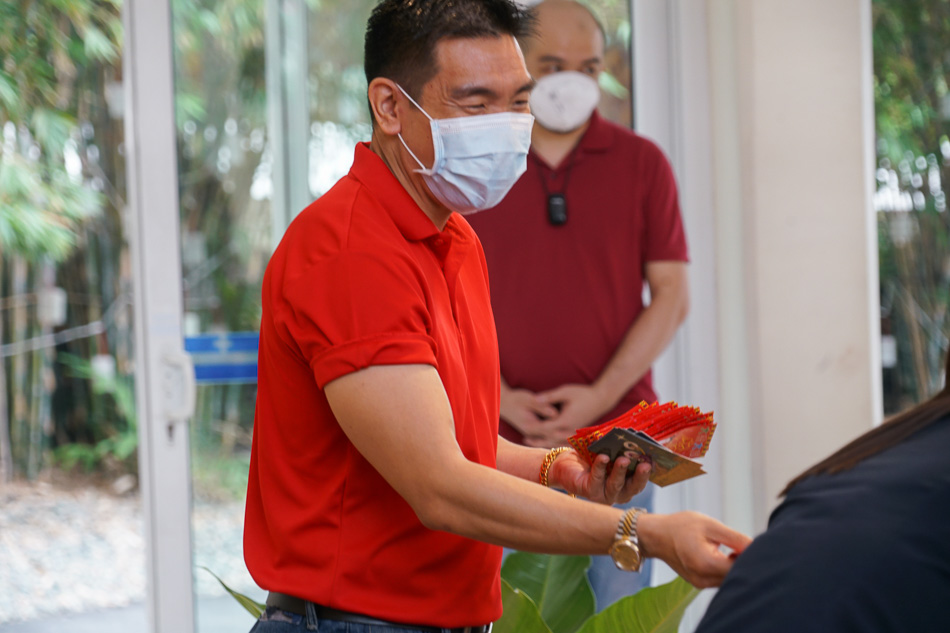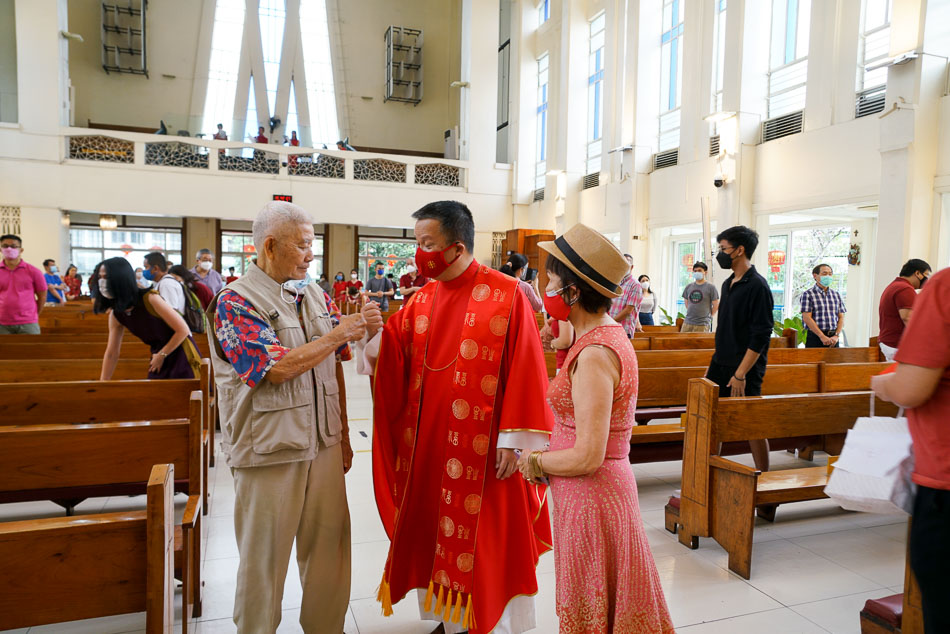How Chinese-Filipino Catholics rely on God’s grace, as they pray for better times | ABS-CBN
ADVERTISEMENT

Welcome, Kapamilya! We use cookies to improve your browsing experience. Continuing to use this site means you agree to our use of cookies. Tell me more!
How Chinese-Filipino Catholics rely on God’s grace, as they pray for better times
Photos and text by Gigie Cruz,
ABS-CBN News
Published Feb 02, 2022 04:33 AM PHT
|
Updated Feb 03, 2022 08:35 AM PHT
Shortly before the first COVD-19 lockdown in 2020, Mary the Queen Parish in Greenhills, San Juan was still able to celebrate the Lunar New Year in the traditional festive way.
Shortly before the first COVD-19 lockdown in 2020, Mary the Queen Parish in Greenhills, San Juan was still able to celebrate the Lunar New Year in the traditional festive way.
Since 2021 however, the new year celebration has been subdued with most opting to attend Masses online as the threat of infection persisted.
Since 2021 however, the new year celebration has been subdued with most opting to attend Masses online as the threat of infection persisted.
This 2022, a good number of parishioners visited the church for the lighting of the first incense on New Year’s eve and physically attended the Eucharistic celebration to welcome the Year of the Tiger, which includes the Ancestor veneration rites at the end of the Mass.
This 2022, a good number of parishioners visited the church for the lighting of the first incense on New Year’s eve and physically attended the Eucharistic celebration to welcome the Year of the Tiger, which includes the Ancestor veneration rites at the end of the Mass.
It was in 2014 when Mary the Queen began an Inculturated Chinese Mass to allow devout Catholic Chinese to welcome the lunar new year with the liturgy infused with English readings, Chinese songs and old traditions.
It was in 2014 when Mary the Queen began an Inculturated Chinese Mass to allow devout Catholic Chinese to welcome the lunar new year with the liturgy infused with English readings, Chinese songs and old traditions.
ADVERTISEMENT
Fr. Aristotle C. Dy, SJ, main celebrant of the Inculturated Mass, says the context of this year’s celebration is really the pandemic.
Fr. Aristotle C. Dy, SJ, main celebrant of the Inculturated Mass, says the context of this year’s celebration is really the pandemic.
Although many mark this most important Chinese festival focusing on attracting luck, wealth and prosperity for the new year, he hopes that as people of faith, “Catholics should have learned to put our faith in the right place or the right person — God. Not to rely on superstitions but rely on God’s grace.”
Although many mark this most important Chinese festival focusing on attracting luck, wealth and prosperity for the new year, he hopes that as people of faith, “Catholics should have learned to put our faith in the right place or the right person — God. Not to rely on superstitions but rely on God’s grace.”
During the pandemic, many have gotten sick or lost their loved ones, which made people realize “that we are subject to forces beyond ourselves and that reminds our surrender to God our creator.”
As the Year of the Tiger begins, Dy underlined the lessons people could learn from the tiger, which according to Chinese mythology, symbolizes leadership, power and protection.
During the pandemic, many have gotten sick or lost their loved ones, which made people realize “that we are subject to forces beyond ourselves and that reminds our surrender to God our creator.”
As the Year of the Tiger begins, Dy underlined the lessons people could learn from the tiger, which according to Chinese mythology, symbolizes leadership, power and protection.
The noticeable marking on the tiger’s forehead — wang (王) — translates to “king,” considered to be the king of all the beasts in China.
The noticeable marking on the tiger’s forehead — wang (王) — translates to “king,” considered to be the king of all the beasts in China.
“What the tiger represents — courage and eagerness — are the exact qualities people need as we learn to live with the virus, survive the pandemic and move on with our lives” he explained.
Adding a stroke on the top of 王 (wang) makes it 主 (Zhǔ ) — which translates to host or “Master”, a reminder to everyone as to who is in charge and deserving of our worship our respect, our prayers.
As the red banner at the church altar reminds people of their faith and not to rely on superstitions but instead on God: “Devoutly relying on God’s grace, joyfully hoping and praying for better times ahead in the year of the tiger.”
“What the tiger represents — courage and eagerness — are the exact qualities people need as we learn to live with the virus, survive the pandemic and move on with our lives” he explained.
Adding a stroke on the top of 王 (wang) makes it 主 (Zhǔ ) — which translates to host or “Master”, a reminder to everyone as to who is in charge and deserving of our worship our respect, our prayers.
As the red banner at the church altar reminds people of their faith and not to rely on superstitions but instead on God: “Devoutly relying on God’s grace, joyfully hoping and praying for better times ahead in the year of the tiger.”
Read More:
Chinese New Year
Lunar New year
year of the Tiger
Inculturated Chinese Mass
Mary the Queen Parish
Chinoy
Filipino-Chinese
Chinoy community
Filipino-Chinese community
Fr. Aristotle Dy
ADVERTISEMENT
ADVERTISEMENT



